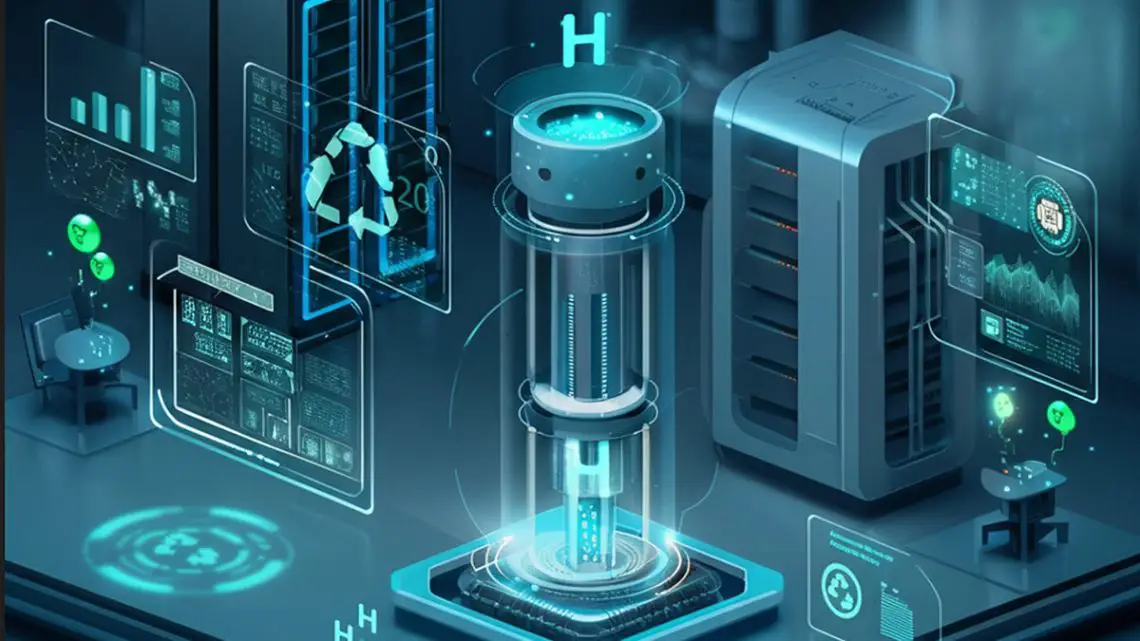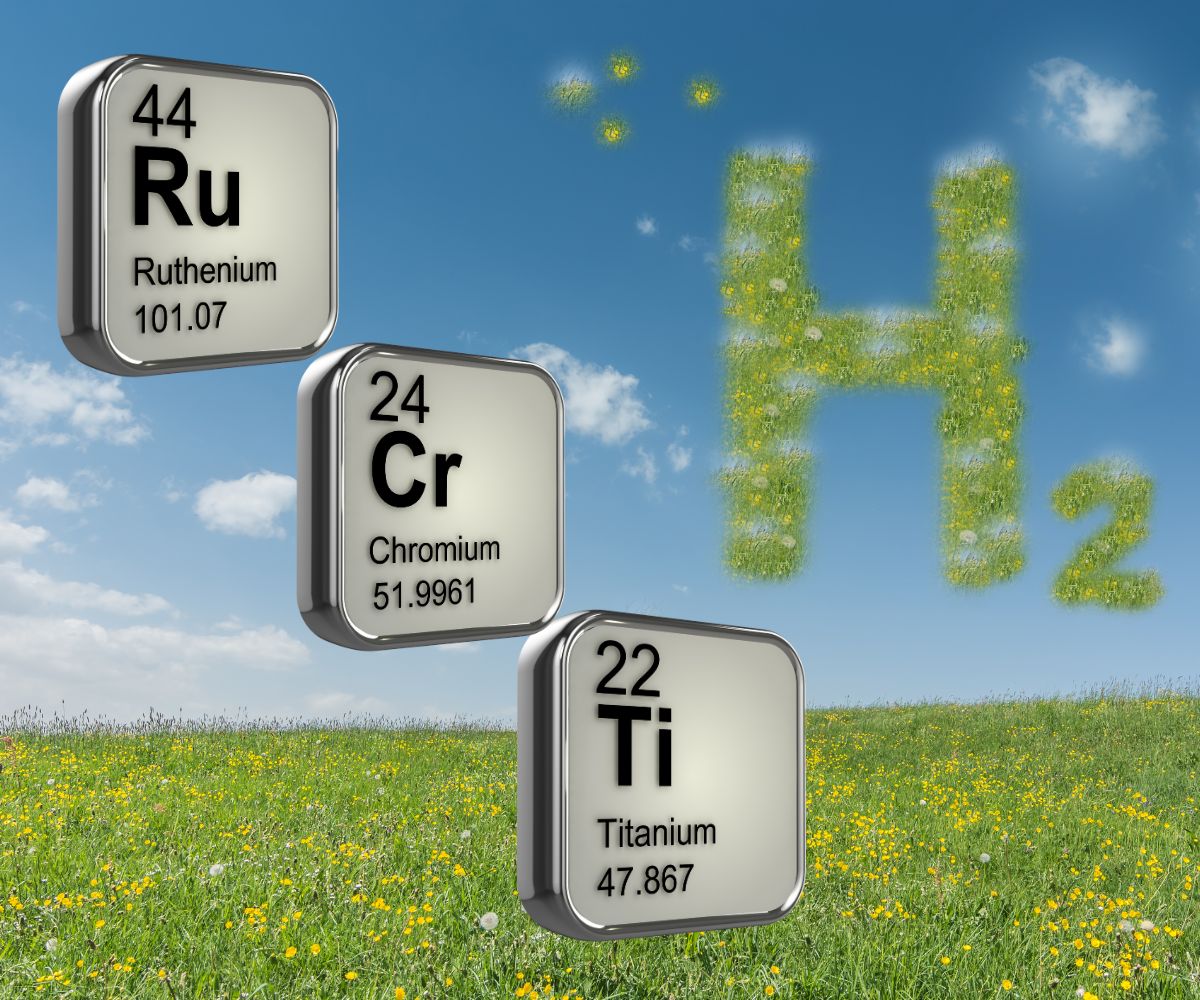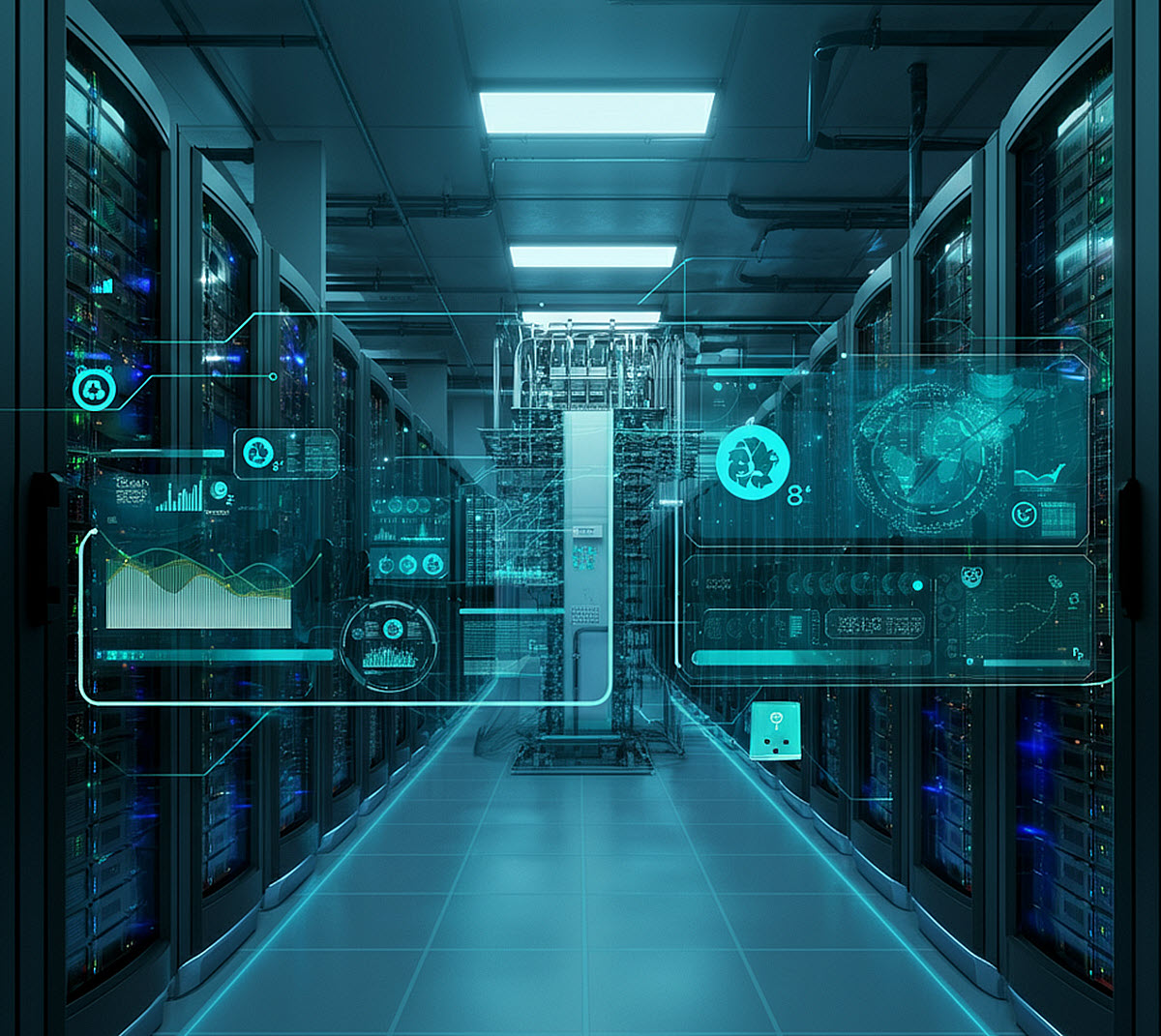
The $1/kg Goal – How AI Could Make It a Reality for Green Hydrogen
January 2, 2025AI Accelerating Efficient Green Hydrogen Production
The global push toward renewable energy has heightened interest in the production of green hydrogen, a sustainable energy source with promising applications. Traditionally, the process of producing green hydrogen—splitting water into oxygen and hydrogen using electricity from renewable sources—has faced significant challenges due to high energy demands and reliance on rare, expensive metals. However, recent advancements in artificial intelligence (AI) are addressing these roadblocks. Researchers are applying AI to develop more efficient, cost-effective methods and uncover innovative catalysts, potentially revolutionizing hydrogen production.
Green Technology – AI Unlocking Faster Breakthroughs in Renewable Energy
AI is increasingly recognized as a critical tool for accelerating progress in renewable energy sectors. By leveraging its capability to analyze massive datasets and simulate outcomes, AI offers a way to optimize processes that were once highly time-consuming and inefficient. A prominent example is its role in advancing green hydrogen technologies.
The traditional research approach for finding suitable catalyst materials for water electrolysis involved labor-intensive trial-and-error experiments in the lab. AI is transforming this process. Recent research has demonstrated how AI programs can rapidly screen millions of potential catalyst candidates through simulations. By narrowing down the options to the most viable materials, researchers can test these top candidates in the lab, drastically reducing the time required for discovery and optimization.
New Catalyst Development Through AI Innovations
A recent breakthrough in green hydrogen production exemplifies AI’s impact. A team of researchers, collaborating with institutions like the Canadian Light Source (CLS) at the University of Saskatchewan, used an AI-driven approach to identify a highly efficient catalyst. The program analyzed over 36,000 metal oxide combinations virtually and pinpointed an alloy of ruthenium, chromium, and titanium as the top choice.
This alloy outperformed the benchmark material, demonstrating 20 times greater stability and durability. Such advancements underscore how AI can expedite the discovery of ideal materials while also improving their performance metrics. While these findings are promising, researchers emphasize the need for further testing to validate the material’s effectiveness under real-world conditions.
Expanding AI’s Role in Renewable Energy Solutions
Beyond green hydrogen, AI is making strides across renewable energy industries. For instance, wind and solar energy operations are utilizing machine learning algorithms to optimize energy storage, manage power grids, and predict energy generation patterns based on weather data. AI’s capacity for handling complex, interconnected variables makes it an invaluable resource for enhancing efficiency in energy systems.
AI programs have also been integrated into carbon capture and storage (CCS) solutions, aiding in the design of membranes that selectively filter CO2 with higher efficacy and lower costs. Similarly, AI’s ability to manage data in real time is improving grid stability and ensuring that renewable energy sources are used to their full potential.
Other Recent Innovations in AI and Hydrogen Technologies
Aside from catalyst discovery, AI is influencing other aspects of hydrogen energy research. For instance, researchers in Germany are leveraging AI-driven models to improve solid oxide electrolyzers. These devices enable hydrogen production at higher efficiencies compared to traditional methods by operating at elevated temperatures. By enhancing the performance of these systems, they offer a pathway to scale up green hydrogen production while lowering operational costs.
Additionally, significant progress is being made in automating fuel cell design. AI is accelerating the development of hydrogen fuel cells by optimizing membrane structures and improving the durability of key components. The ability to simulate usage over thousands of cycles allows researchers to refine designs without the need for lengthy physical tests.
Why These Advances Are Crucial
The importance of these developments cannot be overstated. Green hydrogen is a versatile energy source—it can be used to store renewable energy, fuel vehicles, and power industries with high energy demands. However, its widespread adoption hinges on lowering production costs and improving efficiency. AI-driven innovations are addressing these barriers, making green hydrogen a more viable option to support global decarbonization efforts.
The urgency of combating climate change also underscores the value of green hydrogen. Hydrogen’s potential to replace fossil fuels in hard-to-decarbonize industries, such as steel production and long-haul transport, establishes it as a critical component in achieving global net-zero emissions targets.
Addressing AI’s Energy Demands with Hydrogen Solutions
While artificial intelligence has proven itself a transformative force in renewable energy, it comes with an ironic challenge—AI’s own energy appetite. Data centers supporting AI systems consume vast amounts of electricity, contributing significantly to global energy use. According to recent estimates, large data centers can collectively account for roughly 1% of electricity consumption worldwide, a figure expected to rise with increasing AI adoption. This demand raises questions about how AI, a solution to many energy challenges, might also tackle its own environmental impact.
One promising avenue lies in integrating green hydrogen as a clean energy source for data centers. Hydrogen’s versatility and ability to generate electricity without carbon emissions make it an ideal candidate for data center energy solutions. Several companies in the hydrogen sector have recognized this potential and are positioning their technologies to cater specifically to this growing market.
Can AI Solve Its Own Sustainability Problem?
Interestingly, AI itself may become part of the solution to its energy consumption issues. AI-driven optimization tools are already being used to make data centers more efficient. These systems analyze operations in real-time to identify energy-saving opportunities—such as smarter cooling techniques, better workload distribution, and dynamic power management. By pairing such AI advancements with hydrogen-based backup and primary power systems, the environmental footprint of data centers can be significantly reduced.
For instance, hydrogen-powered fuel cells provide a reliable, low-emission alternative to diesel generators often used as backup power in data centers. Companies are now exploring pilot projects to deploy such systems, with promising results suggesting that hydrogen could sustain future data center growth while keeping emissions low.
How Hydrogen Companies Are Marketing Solutions to Data Centers
Hydrogen energy companies have begun emphasizing their role in powering data centers as a core marketing strategy. They highlight hydrogen’s scalability, reliability, and suitability for clean energy grids, tailoring their messaging directly to tech giants operating massive facilities. The narrative often revolves around offering carbon neutrality, regulatory compliance, and resilience against fluctuating grid power.
Major hydrogen players like Plug Power are exploring partnerships and positioning their fuel cell technologies as ideal solutions for both temporary and long-term data center power needs. Similarly, companies like Ballard Power Systems and Bloom Energy are strengthening their foothold by marketing hydrogen as a sustainable backbone for digitized operations.

Weather resistant Bloom Energy Microgrid Technology – Image Credit Bloom
Hydrogen Companies Driving Innovation in Data Center Solutions
Several hydrogen companies stand out for their focus on clean energy solutions for data centers:
-
Bloom Energy has launched hydrogen-powered servers specifically designed for data centers. These fuel cells provide uninterrupted power supply while eliminating harmful emissions, appealing to organizations with ambitious sustainability targets.
-
Plug Power is deploying innovative hydrogen fuel cell systems in a variety of industries, with business verticals increasingly targeting backup and prime power solutions for technology infrastructure.
-
Ballard Power Systems is also investing in data center solutions through its hydrogen-backed fuel cells, showcasing their ability to meet high energy demands while achieving zero-emission output.
-
HydrogenPro, another company gaining traction, is developing electrolyzers that can integrate into renewable energy grids to provide clean hydrogen for fuel cells. This technology would allow data centers to generate their own green hydrogen onsite or draw from dedicated supply networks.
By focusing on green hydrogen-powered enhancements, these companies are not only addressing a critical energy challenge but also capitalizing on a rapidly growing tech-driven market.
Timeline and Impact of AI-Enhanced Hydrogen Technologies
The adoption of AI-enhanced hydrogen technologies hinges on factors such as ongoing research, real-world testing, and scaling production capabilities. Current estimates indicate that within the next decade, green hydrogen could see significant market integration as costs decrease and infrastructure expands. AI is a key driver in accelerating this transition by optimizing processes and reducing costs.
Key Insights:
- Accelerated Cost Reduction: AI could lower the levelized cost of hydrogen (LCOH) by over 20%, making green hydrogen a competitive alternative to fossil fuels.
- Faster Progress: AI streamlines manufacturing and operational decisions, which would otherwise take years to refine using traditional methods.
- Challenges Without AI:
- Manual experimentation could delay advancements by a decade or more.
- Trial-and-error methods would slow down the optimization of renewable energy usage and electrolyzer operations.
- Sustainable Energy Management:
- AI-driven platforms and smart grid solutions ensure efficient management of production, storage, and distribution.
- These technologies are critical for meeting climate goals and addressing the growing demand for scalable clean energy solutions.
AI serves as an essential catalyst in the shift toward a sustainable energy future, ensuring faster and more efficient deployment of green hydrogen technologies.
How This Technology Can Be Applied Today
The practical applications of these advancements can begin immediately. For instance, industries that already use water electrolysis for hydrogen production can adopt the AI-discovered catalysts to improve efficiency and reduce costs. Governments and energy providers can integrate AI tools to optimize hydrogen production processes, making the energy source more accessible for broader applications.
Looking ahead, AI’s role in renewable energy innovation is poised to grow. By pairing AI’s predictive power with the increasing urgency for sustainable energy solutions, we can accelerate the transition to a cleaner energy future. While challenges remain, this combination of technology and purpose offers a promising pathway to a more sustainable world.



 With over 15 years of reporting hydrogen news, we are your premier source for the latest updates and insights in hydrogen and renewable energy.
With over 15 years of reporting hydrogen news, we are your premier source for the latest updates and insights in hydrogen and renewable energy.